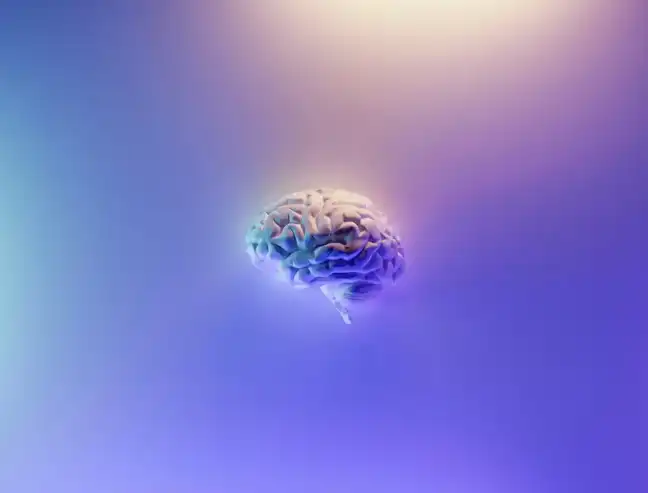The human brain is often described as the most complex and mysterious entity in the known universe. This three-pound, fatty pink organ acts as a supercomputer, a thinking machine, and the central command for everything we do. From composing a symphony to simply pedaling a bike, the brain effortlessly processes information, stores memories, and controls our every action. This guide breaks down how this incredible organ functions.
Table of Contents
- 1.1 Grasping the Scale: Analogies for the Brain
- 1.2 The Brain’s Primary Job: Processing Inputs and Outputs
- 1.3 A Guided Tour of the Brain’s Key Regions
- 1.3.1 The Cerebral Cortex (The Thinking Cap)
- 1.3.2 Other Major Brain Structures
- 1.4 The Brain in Action: Voluntary and Involuntary Control
- 1.5 More Topics
Grasping the Scale: Analogies for the Brain
To understand the brain’s immense complexity, it helps to use analogies.
- Like a Car Engine: The brain consumes fuel (from the food we eat) to power its operations. This energy causes neurons to fire in logical sequences, allowing you to think, remember, and act.
- Like the Internet: The brain contains a vast network of connections that are constantly exchanging information. However, this comparison falls short. The brain contains tens of billions of neurons, each making thousands of connections. According to research director Jim Olds, “if the internet were as complex as our solar system, then the brain would be as complex as our galaxy.”
The Brain’s Primary Job: Processing Inputs and Outputs
At its core, the brain is the center for all the body’s inputs and outputs. Dr. Paula Tallal, a neuroscientist at Rutgers University, explains it simply:
- Inputs: This is all the sensory information the brain constantly receives from the world around you—what you see, hear, touch, taste, and smell.
- Outputs: This is how the brain organizes that sensory data and uses it to control your motor systems, from walking and talking to writing an email.
One of the brain’s primary functions is learning to predict what comes next. This is why young children enjoy having the same book read to them repeatedly; their brains are registering acoustic cues that form sounds and eventually spoken words. The brain excels at putting information together into “smooth sequences” to make sense of the outside world.
A Guided Tour of the Brain’s Key Regions
The brain is not one single mass but a collection of specialized parts, each with a distinct role.
The Cerebral Cortex (The Thinking Cap)
This is the wrinkled, outer layer of the brain, often called “grey matter,” responsible for higher-level functions like cognition and sensation. It is divided into several lobes:
- Frontal Lobe: Controls senses like hearing and smell, complex movements, and problem-solving.
- Parietal Lobe: This is where senses like taste and touch are processed. It makes you aware of your body and where you are in space.
- Temporal Lobe: Helps process and interpret what other parts of the brain are sensing, hearing, or tasting to determine a response. It is crucial for language and interpreting the tone of someone’s voice.
- Prefrontal Cortex: The brain’s “executive,” this area manages complex planning, memory, social skills, and advanced thinking. It helps determine if an action is safe or makes sense.
Other Major Brain Structures
- Limbic System: The emotional center of the brain, controlling intuition, emotional responses, and the senses of smell and taste.
- Cerebellum: Located at the back of the brain, it regulates balance, posture, coordination, and involuntary movements.
- Brain Stem & Hypothalamus: These structures control the body’s essential metabolic functions, including breathing, body temperature, digestion, blood pressure, thirst, and hunger.
The Brain in Action: Voluntary and Involuntary Control
The brain has an amazing ability to pre-plan your actions. According to neurologist Dr. Robert Melillo, your brain calculates and predetermines your movements about a half-second before you perform them. When you reach for a door, your brain has already simulated the necessary sequence of muscle movements.
This control is divided into two types:
- Voluntary Movements: Conscious actions, such as patting your knee to a beat.
- Involuntary Movements: Automatic actions you don’t think about, such as your natural walking gait, reflexes, and the immediate pain response from touching a hot stove.
More Topics
- The Science Behind Your Accent – Understanding the Human Mind
- Why Do We Lie – Understanding the Human Mind
- Brain Surgery – Understanding the Human Mind
- How to Think Yourself Smart – Understanding the Human Mind
- Escape Room Psychology – Understanding the Human Mind
- How Optical Illusions Work – Understanding the Human Mind
- How We Learn – Understanding the Human Mind

